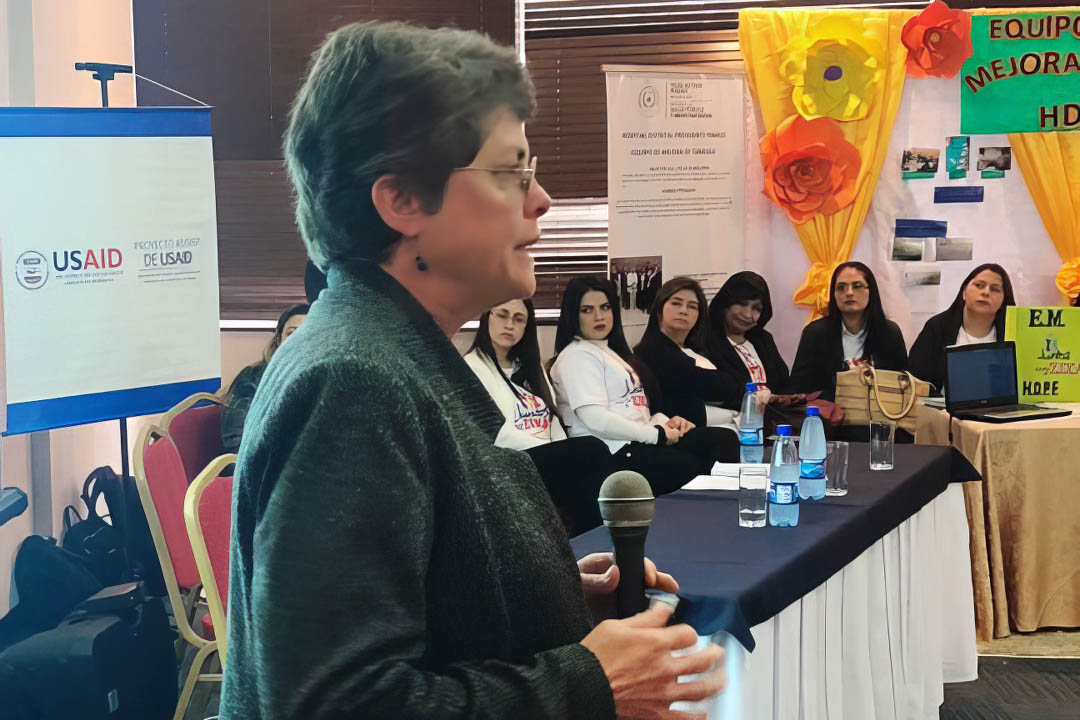
Lani Marquez
Knowledge Management Director
In my years of experience working in quality improvement (QI) in health care in low- and middle-income settings, I have seen many models for how to improve health service delivery. As I reflect on the global programs I have worked on during my 40-year career at URC, including the USAID Quality Assurance, USAID Health Care Improvement, and USAID ASSIST projects, common threads of what achieves sustainable change become apparent.
Frontline Health Workers Drive Local Improvement
The most powerful improvement model is the simplest: engage health workers to choose a priority problem to work on, analyze its causes, develop testable ideas to address those causes, and make a few simple measurements and adjustments to ensure the changes have the desired effect.
This bottom-up approach – improvement led by frontline providers – is more impactful than external audits that scrutinize every possible quality indicator and castigate the health workers involved.
Augmenting Diverse Voices on Health Care Improvement Teams
The global health community now recognizes that client experience of care is as important to quality care as compliance with technical standards.
We have also become more attuned to equity considerations in pursuing Universal Health Coverage, making sure that health services are equally accessible to all communities, and to persons of all abilities and identities. This often necessitates raising awareness about how to recognize and address behavioral and attitudinal barriers to delivering people-centered care and shifting attitudes about who deserves care and respect.
Addressing client experience and equitable care for all requires bringing more voices and perspectives to the table. Early on, we recognized the value of multi-disciplinary improvement teams, initially adding auxiliary nurses and filing clerks to improvement teams and later realizing that drivers and cleaners could also make valuable contributions to improving care.
Recognition of the saliency of “nothing for us without us,” improvement teams addressing services for youth invited youth representatives to the table. We convened focus groups to identify barriers and factors impacting youth access to services, unmet needs, and ways of making services more relevant to this target population. We assessed the behavioral drivers of quality and accessibility improved by observing the attitudes and actions of youth authority figures, including providers, schoolteachers, and facility managers, and helped them recognize changes needed to increase responsiveness and demand.
“Methods should not drive the quality improvement process. Rather, context and capacity determine the most appropriate method for a given setting. And usually, a combination of methods yields better, more sustainable results than narrowly defined approaches.”
A Flexible Quality Improvement Toolkit Yields Sustained Results
Another lesson we have learned is that there are many pathways to quality – there is no single QI or quality assurance (QA) methodology that is superior to others.
Continuous quality improvement (CQI), accreditation, community-defined quality, certification, regulation, training, supportive supervision, audit and feedback, and others can all achieve results. But methods should not drive the QI process. Rather, context and capacity determine the most appropriate method for a given setting. And usually, a combination of methods yields better, more sustainable results than narrowly defined approaches.
More critical than methodology is the extent to which the approach reorients care to community, patient, and health worker needs and preferences – all of which are important and demand consideration.
Collaborative Learning Codifies Best Practices
Also critical to improvement is deliberate attention to learning – gathering learning, translating insights into codified, easily sharable knowledge in the form of tools, job aids, and guidance products, and intentionally scaling up learning to benefit as many people as possible. Collaborative improvement has been successful in so many settings because of its intentional promotion of learning from experience, and actively and efficiently sharing that learning to accelerate the spread of effective change ideas among others.
One of the most professionally gratifying experiences of my career was our Zika work in 13 countries in Latin America and the Caribbean under the USAID ASSIST Project. We developed local capacity not only to apply QI methods, but also to use knowledge management techniques to accelerate learning among teams. And the results spoke for themselves. The percentage of newborns screened for microcephaly from Zika increased from 10% to more than 80% in less than two years.
National Policies Ensure Accountability
Finally, approaches to improving quality, equity, and efficiency require governance and accountability for results. National policies to set standards and expectations for all health sub-sectors are foundational to hold health care providers accountable to patients and communities. So too are mechanisms to channel community perceptions and values back to health program managers and policymakers.
I am proud to see these ideas continue to influence how URC works in countries around the world, from Cambodia to Uganda to Jordan and to the Philippines, and beyond.



